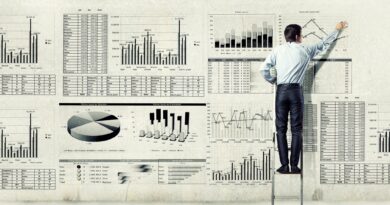Canadian Dollar Forecast: Analyzing Trends and Predictions
The Canadian Dollar (CAD), known colloquially as the Loonie, has been subject to a multitude of economic forces and global dynamics that continually shape its trajectory in the foreign exchange market. In this blog post, we delve into the factors influencing the Canadian Dollar’s recent trends and explore predictions for its future movements.
Economic Indicators: The Pulse of the Loonie
Economic indicators serve as the pulse of any currency, and the Canadian Dollar is no exception. Key indicators such as Gross Domestic Product (GDP) growth, employment rates, and consumer spending provide insights into the overall health of the Canadian economy. A robust economy typically strengthens the Loonie, while economic downturns can lead to depreciation. Analysts closely examine these indicators to forecast how the Canadian Dollar may respond to shifting economic conditions.
Interest Rates and Monetary Policy: A Guiding Force
The Bank of Canada (BoC) wields significant influence over the Canadian Dollar through its control of interest rates and monetary policy. Interest rate differentials between the BoC and other major central banks, particularly the U.S. Federal Reserve, impact the attractiveness of the Loonie to investors. Anticipating changes in monetary policy and interest rates is essential for forecasting the Canadian Dollar’s future movements.
Commodity Prices: The Loonie’s Dance with Resources
Canada’s reliance on commodity exports, including oil, natural gas, and minerals, exposes the Canadian Dollar to the volatility of global commodity markets. Changes in commodity prices can have a profound impact on the Loonie’s value. Analysts closely monitor trends in commodity markets and assess how they might influence the Canadian Dollar’s forecast, considering factors such as supply-demand dynamics and geopolitical events.
Trade Relations and Global Economic Conditions
As a major trading nation, Canada’s exchange rate is intricately linked to global trade conditions. Trade agreements, tariffs, and geopolitical events can significantly affect the Canadian Dollar. Ongoing trade tensions, economic partnerships, and shifts in global economic conditions are carefully analyzed to forecast how they might influence the Loonie in the coming months.
Inflation and Purchasing Power: Assessing Relative Strength
Inflation differentials play a crucial role in determining a currency’s strength. Analysts assess how Canada’s inflation rates compare to those of its trading partners to gauge the relative purchasing power of the Canadian Dollar. Understanding these inflation dynamics helps in forecasting whether the Loonie is likely to strengthen or weaken against other currencies.
Geopolitical Factors: Unpredictable Variables
Geopolitical events, including elections, international conflicts, and diplomatic relations, can introduce unpredictable variables into the Canadian Dollar’s forecast. Analysts carefully assess geopolitical developments and their potential impacts on investor confidence and market sentiment, recognizing that these factors can contribute to sudden fluctuations in the exchange rate.
Navigating the Future of the Loonie
Looking forward, forecasting the Canadian Dollar involves a comprehensive analysis of economic indicators, monetary policy, commodity prices, global trade dynamics, inflation, and geopolitical factors. The interplay of these variables creates a dynamic environment that requires constant monitoring and adaptation. As analysts and investors navigate the future of the Loonie, staying informed about these trends and predictions is paramount for making well-informed decisions in the complex and ever-changing landscape of the foreign exchange market.



